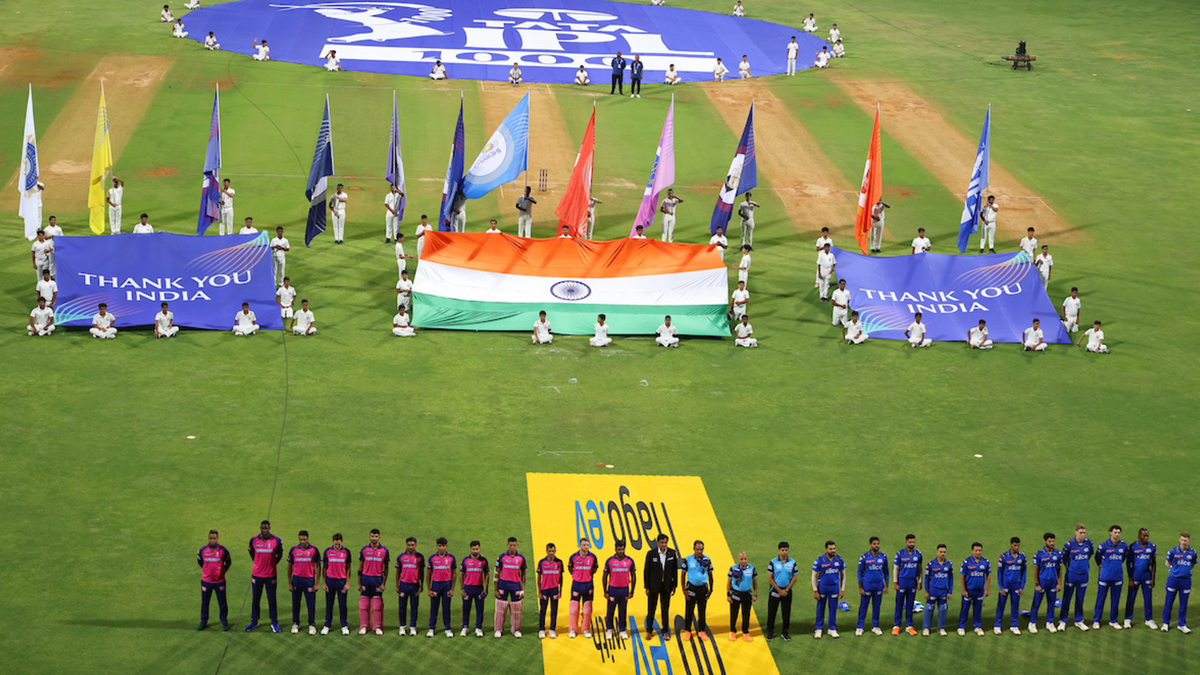
In 2023, the IPL returned to its traditional home-and-away format after four long years this season, and has been all the more enjoyable for it. Naman Agarwal looks at how this season has been a breath of fresh air after three pandemic-affected editions that lacked variety.
To bet on the IPL with our Match Centre partners bet365, head here.

Until last weekend, no visiting team had ever chased 200 or more at Chepauk, while no team – home or touring – had chased the same total at the Wankhede Stadium in the IPL. Punjab Kings and Mumbai Indians ended both streaks on the same day (April 30). High-scoring thrillers are a salient feature of Twenty20 cricket, and IPL 2023 has provided enough of those.
Yet, that has not been all. The two record chases were followed by two games where the home team failed to chase sub-135 targets against lower-ranked teams on the points table. Lucknow Super Giants bottled a second consecutive low chase at their home ground against Royal Challengers Bangalore, while Gujarat Titans, table toppers with a reputation of chasing down everything, faltered against bottom-ranked Delhi Capitals’ 130 at home.
All that has been a welcome change from the last three pandemic-affected editions where games mostly followed monotonic patterns, primarily because they were played across a small pool of venues with no side having a say in it.
The 2020 edition was played entirely in the UAE, across the three venues of Dubai, Abu Dhabi, and Sharjah. The BCCI tried hosting the 2021 edition in India in a caravan style while ensuring neutral venues for every match, but had to shift to the UAE mid-way into the season due to Covid-19. And the league stage of 2022 was hosted across just four venues in the state of Maharashtra.
There were obviously a few surprises here and there in terms of the results – again, a feature that makes T20 special – but generally, teams, players, and viewers, all knew what to expect on any given day, and were rarely proven wrong. Dew played a major role in the UAE, leading to a winning percentage of 56.04 percent for teams fielding first. The effect was most apparent in Abu Dhabi, where the winning percentage for chasing teams rose to 60 percent.
Sharjah offered a unique set of conditions with its short boundaries and sticky wicket. Towards the start of the season, teams racked up 200 on the fresh surface, but scores got progressively smaller as the pitch got slower. Even when half of IPL 2021 and the entirety of IPL 2022 happened in India, the conditions were predictable due to the limited number of venues: teams had to play back-to-back games at the same ground, allowing no space for variety.
This season has broken that trend. With 10 teams and 12 venues on display, variety has been in abundance – not merely across venues but even at the same venue. Grounds like the Ekana Stadium in Lucknow, and the Narendra Modi Stadium in Ahmedabad have massive squares, but they have offered pitches with different compositions of soils, resulting in teams scoring in excess of 190 as well as failing to reach 120 in their 20 overs.
Another trend this season has broken is that of the home advantage. In the pre-Covid era, teams used to build their squads around the conditions they would expect at their home venues, and used to be successful at home more often than not. With the return of the home-and-away format, that trend was expected to resurface this year, but it has not.
Only 17 out of the first 47 matches have been won by the home team this season. Grounds like Chepauk, Hyderabad, and Jaipur, which used to be fortresses for their home teams have been breached by visiting sides on several occasions this time.
Dew is yet to play a major role in the tournament. One of the reasons for that, again, is the wide range of venues and, hence, weather in a vast nation. This has prevented the ‘win the toss, field first, win the match’ template from repeating. Of the first 47 matches, 27 have been won by the side batting first – a winning percentage of 57.4% – a number hard to imagine after the last few seasons of the IPL.
The IPL was made to entertain. It was supposed to make the improbable, probable. The last few seasons might have become a bit predictable – monotonous, perhaps – due to unavoidable circumstances. But with the return of the home-and-away format and the crowds filling up the stadiums across the country once again, the IPL seems to be back at home, bigger, better, and more entertaining than ever.








